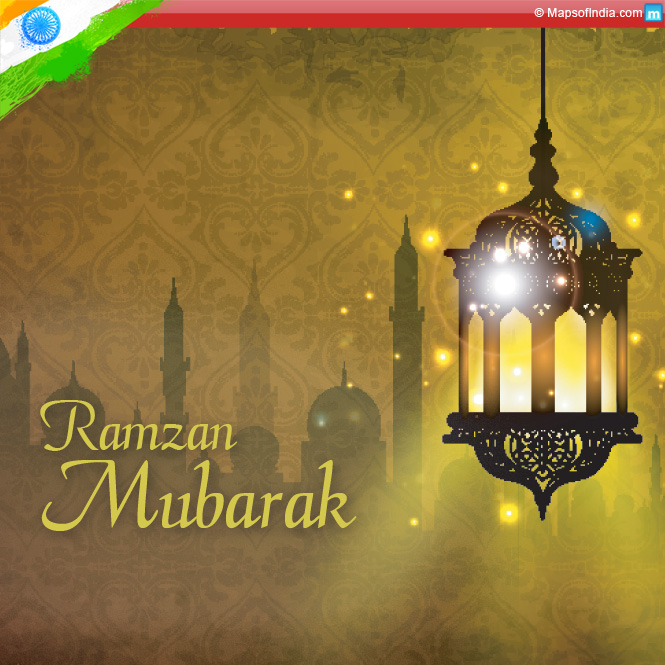Medieval period is an important period in the history of India because of the developments in the field of art and languages, culture and religion. Also the period has witnessed the impact of other religions on the Indian culture. Beginning of Medieval period is marked by the rise of the Rajput clan. This period is also referred to as Postclassical Era. Medieval period lasted from the 8th to the 18th century CE with early Medieval period from the 8th to the 13th century and the late medieval period from the 13th to the 18th century. Early Medieval period witnessed wars among regional kingdoms from north and south India where as late medieval period saw the number of Muslim invasions by Mughals, Afghans and Turks. By the end of the fifteenth century European traders started doing trade and around mid-eighteenth century they became a political force in India marking the end of Medieval period. But some scholars believe that start of Mughal Empire is the end of Medieval period in India.
Main Empires and Events in Medieval period
Rajput Kingdoms – Rajput came for the first time in the 7th century AD. But historians gave different theories of their origin.
The Turkish Invasion (1000 AD – 1206 AD) – North India during this period was raided by Mahmud of Ghazni. He sacked Somnath temple many a times. Prithviraj Chauhan defeated Ghuri in the first battle of Tarain but was defeated by Ghuri in the second battle. With this comes the rule of the Sultan of Delhi (Delhi Sultnate).
The Slave Dynasty (1206 AD – 1290 AD) – Ghuri gave the commands of his reign to his slave Aibak. Aibak broke his links with Ghazni to establish Slave Dynasty. Aibak was succeeded by Iltutmish. He built Qutub Minar and during this period Delhi became the capital of India.
The Khiljis (1290 AD – 1320 AD) – Delhi Sultanate was taken over by Jalaluddin Khilji. But he was murdered by Alauddin Khilji who then took over his position. Khilji ruled most of the South India.
The Tughlaqs (1320 AD – 1412 AD) – Ghiyasuddin Tughlaq brought Tughlaqs into power. Famous Tughlaqs are Muhammad-Bin-Tughlaq, and Firoz Shah Tughlaq.
The Sayyids and Lodhi Sultans (1414 AD – 1526 AD) – Sayyids ruled Delhi for a short duration and taken over by Lodhis who moved the capital from Delhi to Agra. Many small kingdoms emerged with the decrease in the power of Lodhis. Following these two dynasties were the powerful Vijayanagara Empire (1336 AD – 1565 AD) and the Bahamani Kingdom (1346 AD – 1689 AD).
Chola Empire – One of the most prominent empires in South India that ruled from Tamilnadu and extended till south east asian Nations (Cholamandalam region) from the 9th to 13th century. The Cholas unlike most of the other rulers were not from outside but from South India who contributed at lot towards political, architectural, cultural spheres of India. Cholas had strong army and powerful navy. During their regime, Buddhism and Jainism flourished to a great extent. Along with this, fine arts, metal casting and literature touched new heights. Vijayanagara was one of the most important states to emerge in the 14th century. The place is now known as Karnataka. Many famous travelers of that time had mentioned about this place.
The Mughal Empire (1526 AD – 1857 AD): The Sultans of Delhi were replaced by the Mughals who were great patronage of art, music, culture and architecture. They ruled strongly till 1707 and after this the Mughal Empire weakened and disintegrated. Zahir-ud-din Muhammad Babur founded the Mughal Empire by defeating Abrahim Lodhi at Panipat in 1526. Babur recorded all his experiences in Tuzuk-i-Baburi. The word Mughal has its origin in Babur’s Mongol ancestry. In 1530 Babur’s son Humayun came into power. A battle at Kanauj in 1540 brought Sher Shah into power but again Humayun recaptured Delhi and Agra. He re-established Mughal rule in India. He was succeeded by his son Akbar. He was the great emperor and brought almost entire India under his rule. Jahangir, Shah Jahan and Aurangzeb are the other Mughal kings.
The Great Marathas (1674 AD – 1819 AD) – Hindavi Swaraj was established by the great Maratha Shivaji and then he became Chattrapati.
Bhakti Movement
Sufis and saints were famous religious gurus in Medieval period. Along with them were the Bhakti saints whose teachings were also very popular. Guru Nanak dev ji, Ramanuja, Ramananda, Kabir, Chaitanya Mahaprabhu, Mirabai, Namadeva are few of the great saints of that time. Almost every saint in Medieval period challenged the caste system, emphasized oneness of God, brotherhood of all human beings. Under Bhakti movement no one was discriminated on the basis of caste or gender.
Art and painting
Painting was another important area that was flourished to a great extent during this period. Persian art came to India with Humayun who brought painters with him to India. Most of the art got influenced by the Islamic culture. Mughal school of painting kept flourishing under the rule of Akbar, Jahangir and Shah Jahan. Jahangir was a great painter and under his rule the Mughal school of painting reached at its peak. He had many famous painters in his court.
Along with the Mughal school of painting, the Rajput and the Pahari schools of painting also got support. Beautiful landscapes were introduced by the Mughals. Rural art and social scenes from daily life became prominent.
Medieval period was the marvelous period and an era of wars and great architecture in India. Also most of the regional languages of today have evolved during this period. This period is also important from the religious point of view because of many Bhakti movements and saints such as Guru Nanak Dev ji, Ramananda, Kabir etc. Suffi saints such as e Chishti, Firdausi, and Nizam-ud-din Auliy were also there during Medieval period. Regional as well as folk traditions developed to a great extent.




